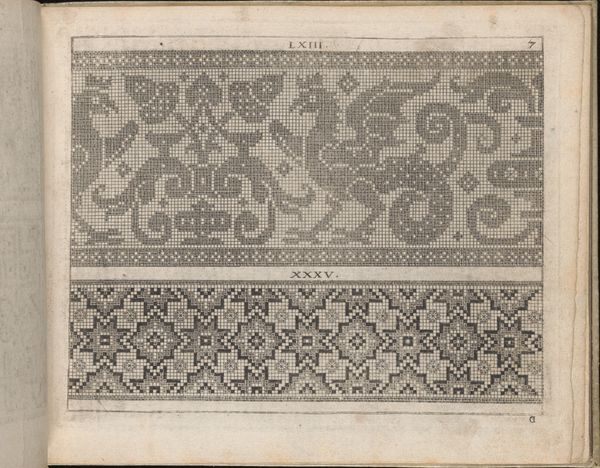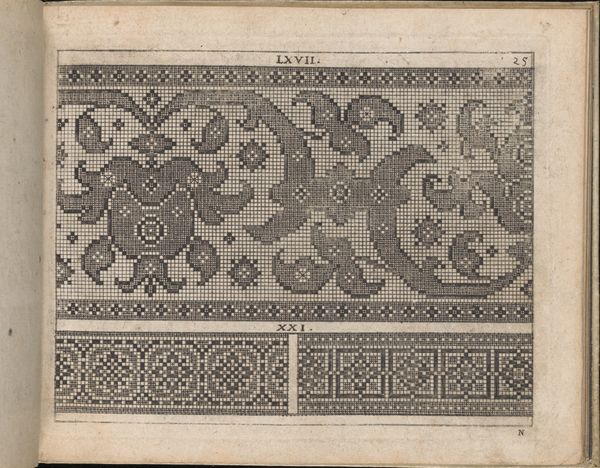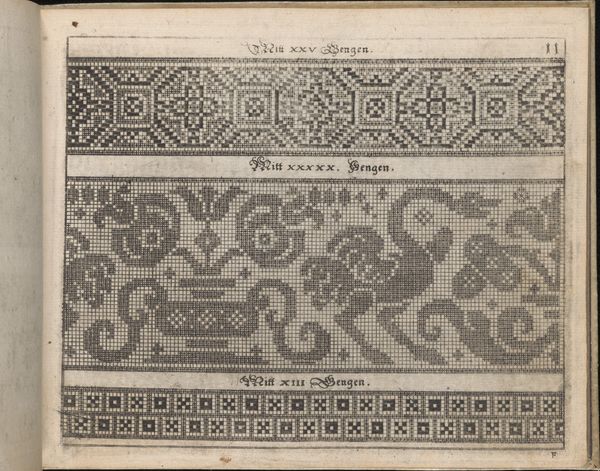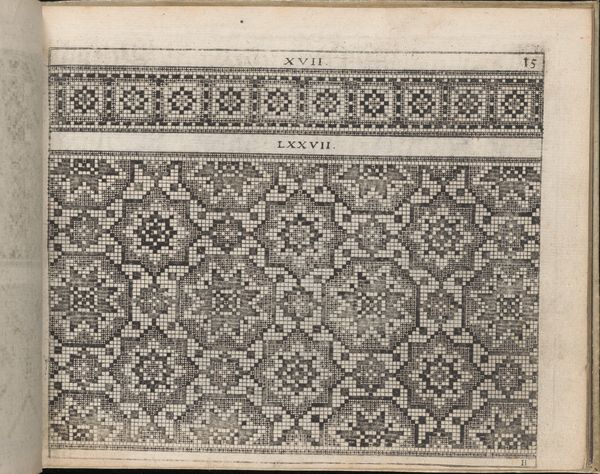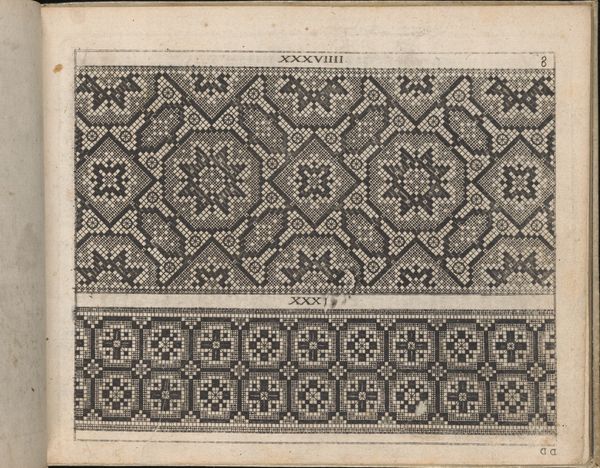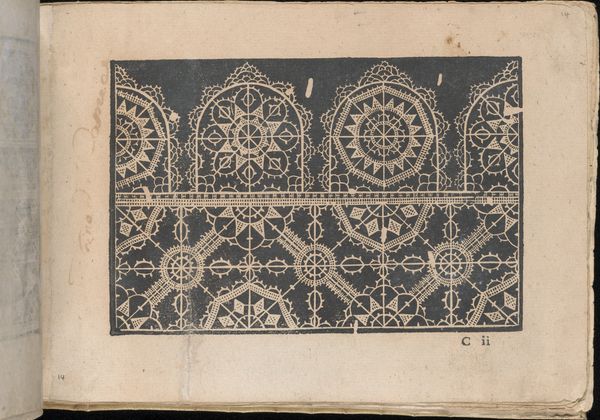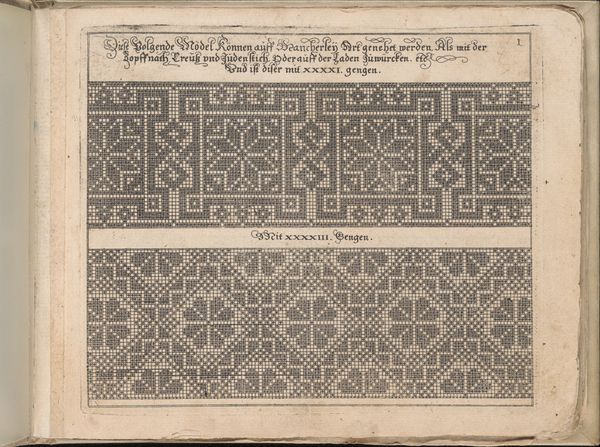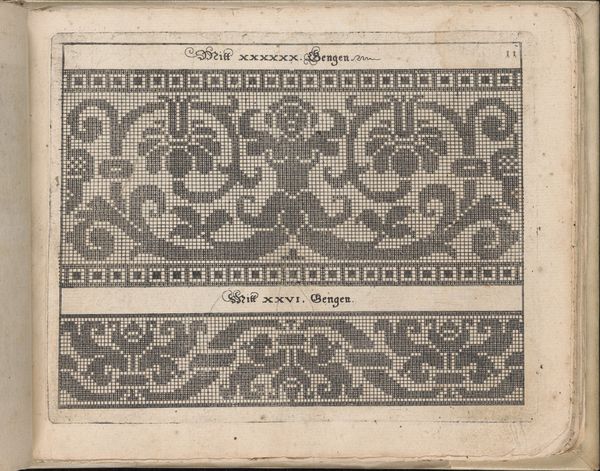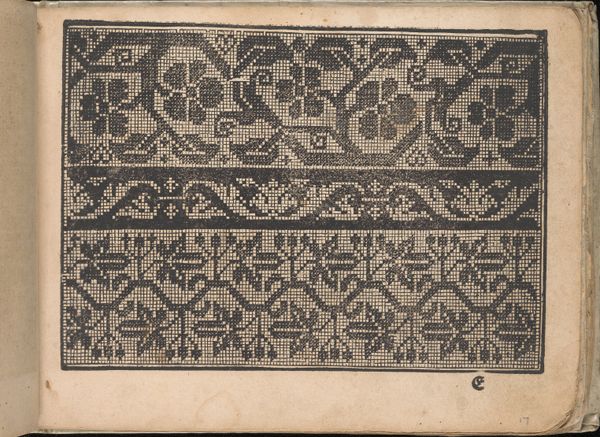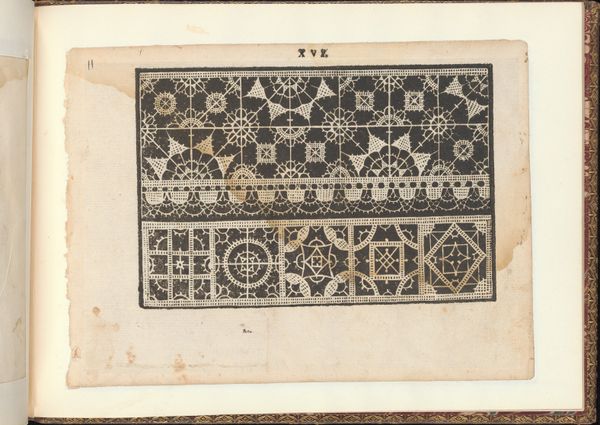
drawing, ornament, print, paper, ink, woodcut
#
drawing
#
ornament
#
ink paper printed
# print
#
book
#
paper
#
11_renaissance
#
ink
#
geometric
#
woodcut
#
northern-renaissance
#
decorative-art
Dimensions: Overall: 5 11/16 x 7 1/16 x 3/4 in. (14.5 x 18 x 1.9 cm)
Copyright: Public Domain
Editor: We're looking at a page from "Newes Modelbuch in Kupffer," created by Johann Sibmacher in 1604. It’s an ink and woodcut print on paper, housed at the Metropolitan Museum of Art. It reminds me of a very elaborate cross-stitch pattern. What stands out to you? Curator: The rigorous geometry. Notice the grid which structures the entire composition. Every motif, every flourish, is born from and contained by this underlying architecture. It dictates the possible forms, limiting and thereby defining the aesthetic space. What do you observe about the interplay between the geometric grid and the representational forms? Editor: I see how the grid sort of pixelates the floral designs and the animal figure, almost like an early form of digital art, but created through manual printing techniques. Curator: Precisely. Consider the materiality of the line itself. It’s not fluid or painterly but sharp, consistent, a product of the woodcut technique. The varying density of these lines creates tonality and texture, defining the patterns and figures within their square confines. The medium profoundly affects the message, wouldn't you agree? Editor: That makes perfect sense. I hadn't considered how much the woodcut influences the overall blocky design, I was busy considering it an archaic form of pixel art. Thank you for pointing that out! Curator: It's about noticing how those basic visual elements create a particular structure. A structure that dictates our reception and experience of the image itself. The beauty lies not in symbolism but in the rigorous manipulation of form and space. Editor: I appreciate the chance to closely look at the artwork as an exploration of its base materials, such as printing and woodcutting methods, as an influence in the final work of art. Curator: It illustrates the inherent power of structure and how the smallest details, consistently applied, can yield incredible visual complexity and artistic expression.
Comments
No comments
Be the first to comment and join the conversation on the ultimate creative platform.
